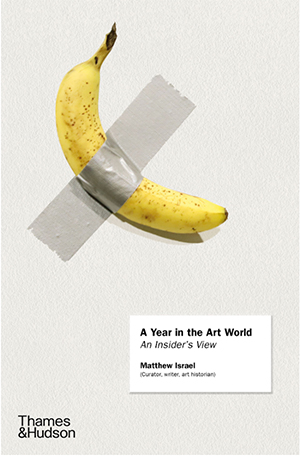A Year In The Art World (exerpt)
Written by Matthew Isreal, 2019
Chapter 2: Fabricators
… I’m now in another industrial neighbourhood – this time back on the other side of the country, in Long Island City, Queens, to speak with another go-to fabricator of the moment, Ted Lawson, owner of the fabrication company Prototype. Ted looks to be in his late forties, but has a young face. He has short dark hair and dark-rimmed glasses and, like Grant, he is a man – and being a man is true of most people I meet in the world of art fabrication. Ted leads me into the premises as his small dog, Harli, jumps up and nips at my legs to greet me. I get a quick glimpse of a large workplace upstairs, and then we head down to a large basement space and settle on a couch to speak.
Prototype is a respected studio with a similar feel to Standard, but it has been around a bit longer. Since the late 1990s, Lawson has worked with artists like Koons as well as Mariko Mori, Tony Matelli, Daniel Arsham, Yoko Ono, Aaron Young and Ghada Amer. Lawson sees himself firmly in the second camp of fabricators, as a producer. He tells me he compares his function to not just any producer, but Dr Dre, the billionaire hip-hop producer, rapper and founder of Beats. Lawson explains, ‘I think of [fabrication] like…Dre produces other musicians’ work. He has his own long career as an artist in his own right. He’s very good at the craft. He’s very good at the business. He’s very good at doing a little bit of everything. But he…is like “this artist is super-talented, and I can take their brand, their music, their vision and enhance it”. A really good producer has to get in the head of the artist, has to have an encyclopaedic knowledge of everything, a little bit of everything – they have to be able to problem-solve any problem. It’s a very intimate, intense, sometimes difficult relationship between a fabricator and a client. So [the term] fabricator probably should be changed to another name. Right now, fabricator sort of implies anything. It’s sort of like [saying] the word art. It spans the whole spectrum.’
Lawson has clearly spent time thinking about what it means to be a fabricator not just from a business perspective, but from an intellectual perspective. As he describes it, he believes the main variables a fabricator contends with are 1) the concept, or the idea behind the work; 2) the process to make the work; and then 3) the materials. ‘If the artist brings me two of those three [variables], I can work out the third one with them. If they give me three of the three, that’s rare because most people coming to [a] fabricator don’t.’ He also says if they only bring him one of three, he’s not going to work with them. His function is not to have so much of a role in the work, and in such a case, the artist really wouldn’t be creating the piece on their own. He has often encountered this issue working with younger artists. For a while, he used to work with artists who had just received their MFAs and whose work was getting ‘hot’; he did this as a way of staying plugged in to younger artists, and as a kind of ‘giving back to the community thing. But I stopped that, because [young artists] can be really hard to work with. They don’t fully understand the responsibility of hiring a fabricator. They want to treat it like buying something at the store. But they don’t realize that it’s their fucking work. Like, I would fabricate it but you have to make choices, and the choices end the second you take the work out of my studio. You made this thing; the fabricator is helping you. It’s a two-way street. Ultimately that’s the critical moment, that’s the test. A great artist knows that. They wouldn’t give up that power by ceding that responsibility,’ he explains. At the end of the day, Lawson says, ‘The artist is responsible for the work and the fabricator is not. That’s the distinction that everyone always asks about. The artist puts their name on it, and it represents them. [In this way] art doesn’t really exist as an object, it exists as an object in relation to the artist as a persona, person, reality, fantasy, whatever it is.’ …
 Available on Amazon Books
Available on Amazon Books